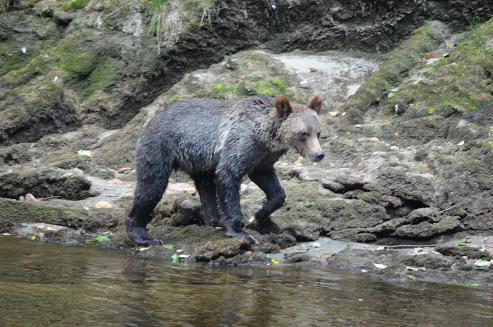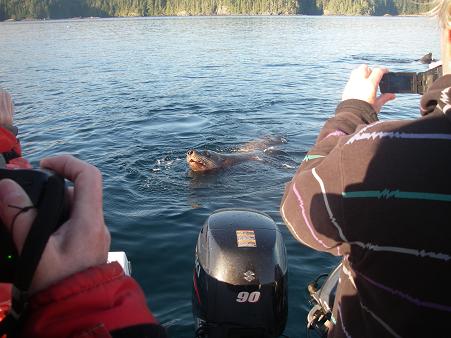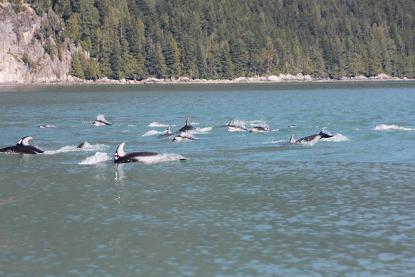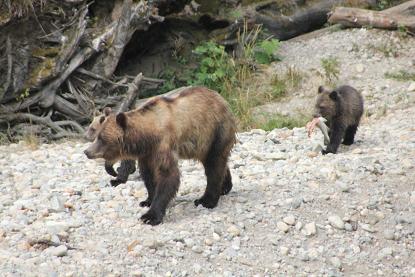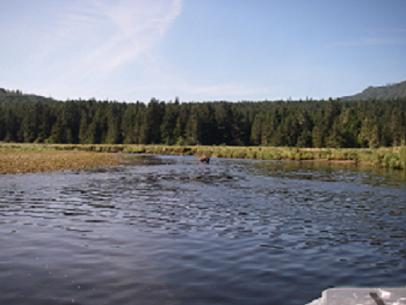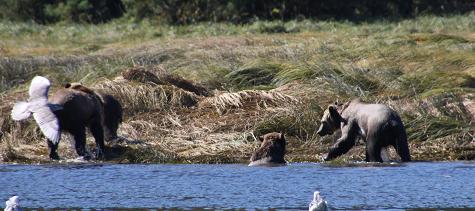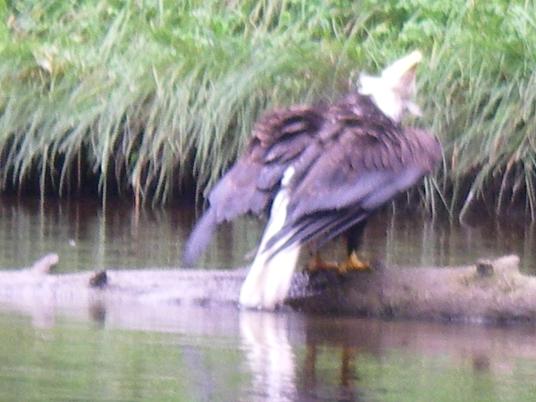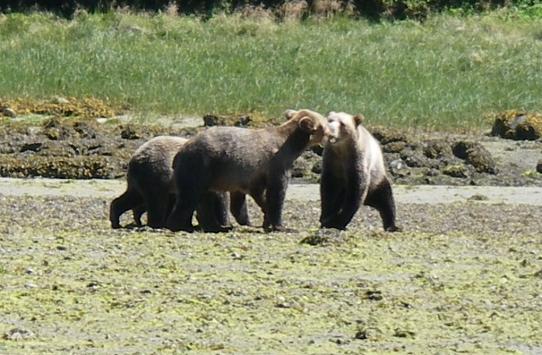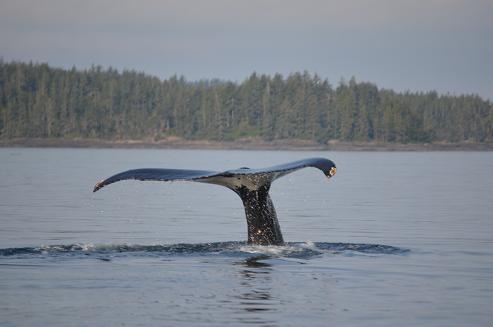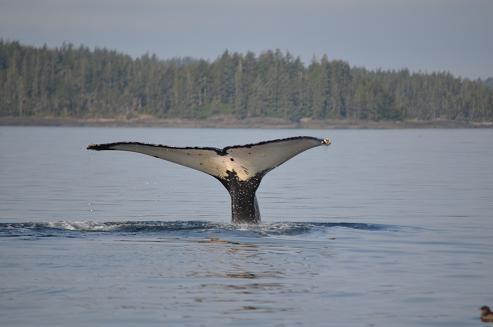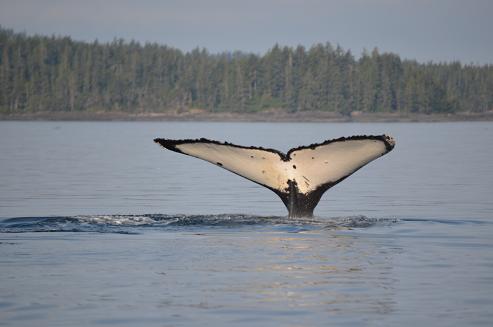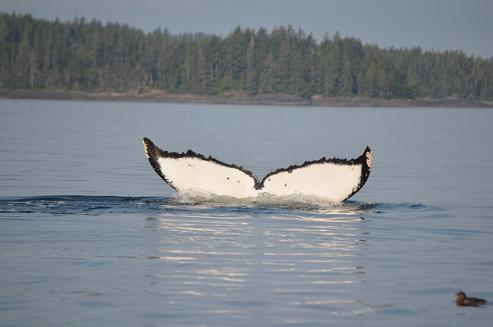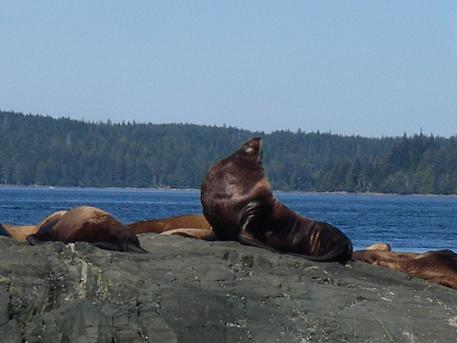
Steller sea lions are social and gather at various times throughout the year when mating and breeding are not taking place. They use traditional haul out sites (an area used for resting) and rookeries (an area used for breeding and rearing young) on remote and exposed islands. These sites can be rock shelves, ledges, boulders, and gravel or sand beaches. Even in crowds, the big bulls are unmistakable—they are three times larger than females.
Weight: males: up to 2,500 pounds (1,120 kg) females: up to 770 pounds (350 kg) pups: about 35-50 pounds (16-22.5 kg)
Length: males: about 10-11 feet (3-3.4 m) females: about 7.5-9.5 feet (2.5-3.0 m) pups: about 3.3 feet (1 m)

